To get started with underwater photogrammetry and complete your first underwater project, you’ll need some equipment, software, some skills and some time. If you prepare well for this, you will maximize your chances of success, or at least learn a lot before your next attempts. In this article I’ll give you some tips, but you’ll also need to read about underwater photogrammetry on the web and watch some videos.
Get a camera with an underwater housing
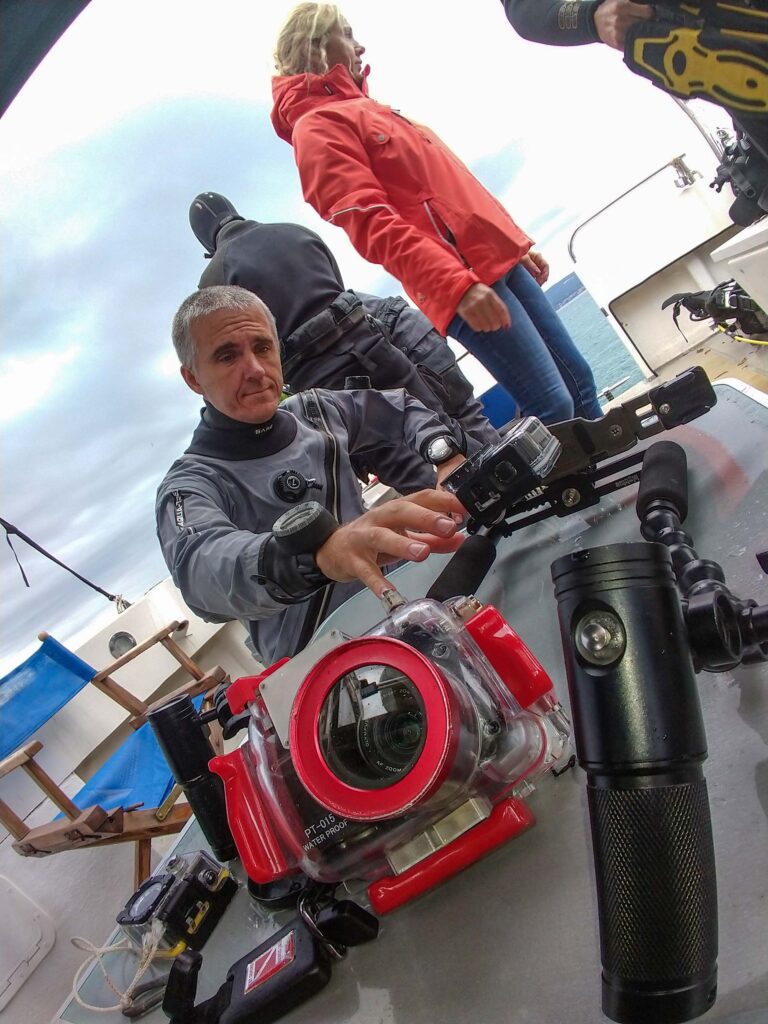

GoPro or other action camera in underwater photogrammetry
Contrary to what you might think, you don’t need expensive and complicated equipment for underwater photogrammetry. The easiest way to get started is with a small action camera such as GoPro. I mainly use GoPro even for very complicated projects. This is mostly due to the fact that this camera is almost indestructible, as long as the housing remains tight, and you can shoot with it for hours before its battery runs out. It doesn’t engage you as much as other cameras, because it can take photos automatically in intervals, and the wide-angle lens provides sharp images from roughly 40 cm to infinity, so you don’t have to focus for every photo. Besides, it’s lightweight, I can fit everywhere with it, and if I need to, I can attach it to a remote-controlled vehicle.
DSLR camera in underwater photogrammetry
If you even have a DSLR with an underwater housing, I don’t recommend it at least for your first photogrammetric models. A DSLR is great for taking single images, but for underwater photogrammetry you need to take at least hundreds, and usually thousands, of them. If you have to manually press the shutter-release button so many times and adjust the focus each time, it can become problematic.
Compact or mirrorless camera in underwater photogrammetry
A compact or mirrorless camera can also be an intermediate solution. They are smaller, making them more convenient to use underwater, but there is still the issue of focusing and the ability to take pictures automatically in intervals. Not all such cameras can do this. And if they can, they probably cost more than an action camera. I rarely use a compact camera in underwater photogrammetry and when I do, it is rather used as a second camera.
Mobile phone in underwater photogrammetry
There is still the question of taking pictures for underwater photogrammetry with a phone in an underwater housing. With a phone you can often take continuous shots, but doing it with auto focus is a different matter. This is also where the issue of a rapidly discharging battery comes into play. After all, you don’t want to end a dive just because the battery ran out. And finally, a question… Are you sure you want to take your latest phone with your SIM card, mobile banking, digital ID and other important things underwater? After all, you could damage it there, flood it or lose it. And if it’s not a new phone, but an old one for which you want to buy a special case, consider whether it might be cheaper to invest in a GoPro instead. The GoPro probably offers better photo quality for a lower price, and instantly enables everything that with a mobile phone you would have to solve with additional paid apps.
Get the right lighting for underwater photogrammetry
It must be strong enough, so even in the darkest places you will have enough light, for the camera to be able to take pictures at the maximum sensitivity (ISO) of 400. Larger sensitivities tend to cause a lot of noise in the pictures, which will be negatively reflected in the various stages of processing, as well as in the quality of the final model. Underwater photogrammetry requires good quality photographs with lots of detail, and this can only be achieved when the subject is well lit.
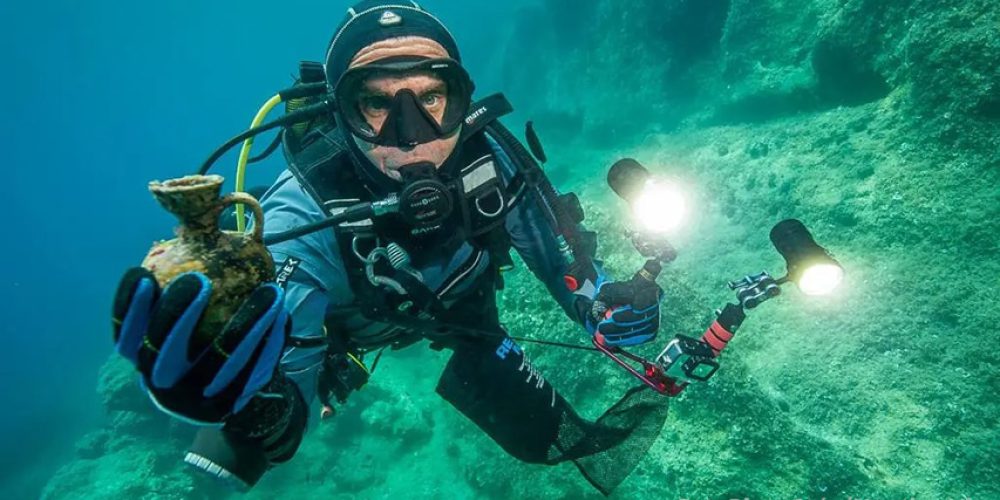
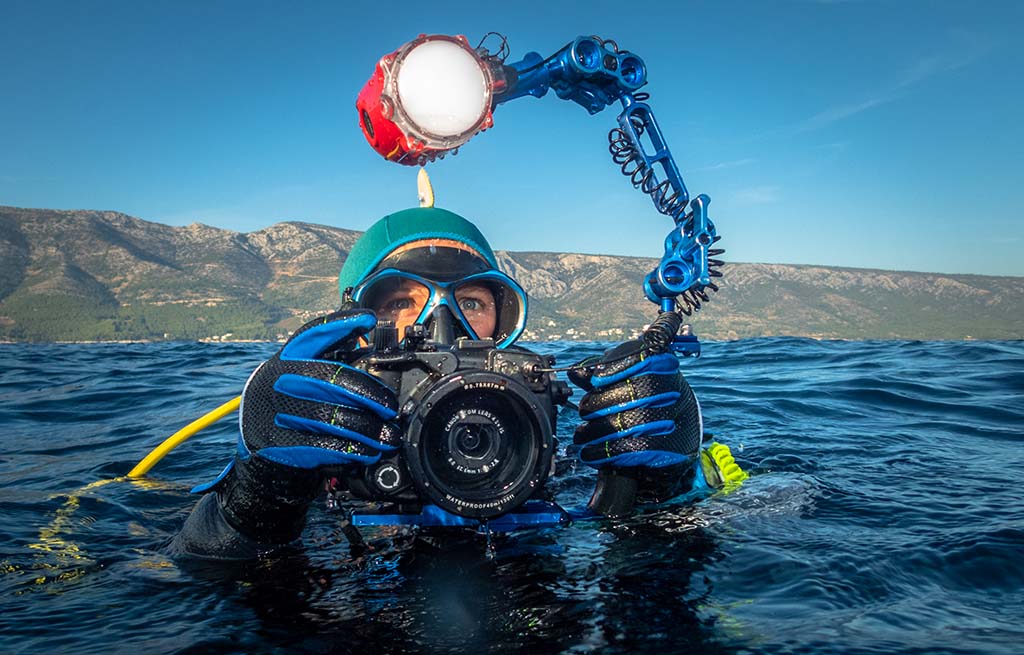
Video lights in underwater photogrammetry
I mainly use continuous lightning – underwater video lights. They give an evenly lit area and while swimming I can see in real time what is being photographed. And in underwater photogrammetry it’s important not to stop and repeat the shot, but to just keep swimming and taking more pictures. Such lights can run on maximum power for about 2h, which in my case means changing batteries every two dives. They are also relatively cheap. One such lamp can be bought for about $50.
Strobe lights in underwater photogrammetry
You can also use strobe lighting. I use such a lamp with a compact camera. But this comes with several problems. First of all, strobes are not made to take hundreds of pictures one after another with them. They get hot with each flash and then need to cool down. If you do underwater photography, you usually take a few shots and then change position or look for another subject to photograph. Then the strobe light has time to cool down for a minute or two. In underwater photogrammetry, there won’t be that time, which can be bad for the lamp. And a new one is an expense of about $400.
Gather data for underwater photogrammetry – taking pictures
Good plan
Collecting data for underwater photogrammetry should begin with a good plan. You need to know what you are photographing, how big the object is and what obstacles or problems you may encounter there. How many people will be needed? Is there anything limiting us? What is the visibility there? Will there be enough light? Do we have the right photographic equipment? Will we be able to photograph everything at once? Or will photo acquisition need to be broken up into several stages? If so, how many and which parts do we want to photograph first and last?
Such questions need to be answered before we even start photographing anything underwater. Otherwise, the whole endeavor may turn out to be a waste of time, because we will come back either with no pictures or not enough of them. The best thing to do is to start planning small projects, in places we already know, and then on the experience gained in such a way, set ourselves bigger and bigger challenges.
Good images for underwater photogrammetry
When it comes to how to take good photos for underwater photogrammetry, there are a few basic rules to follow to make our photogrammetry project a success.
Photos must be sharp
The first step in any photogrammetric project is to arrange the photos in virtual 3d space so that they match as closely as possible where the camera was in relation to the object in real space. If one of the photos is out of focus or has motion blur, the program may get confused and misplace that photo, or it may not be able to place it at all. Then, at best, we will create an incomplete model. So if a photo is out of focus, we just don’t use it.
Photos must be well exposed
Only then we will have minimal noise and the right amount of detail for the software to tie these photos together. Photos that are too dark or too bright will either be rejected, or worse, be accepted by the software at the initial stage. If you don’t notice this in time, they will certainly cause quality problems at the end and you will have to start the project almost from scratch.
Photos must be taken with an overlapping
That is, each photo must have something in common with another photo, because the computer will compare them with each other and look for different viewpoints on the same elements of the scanned object. The usual approach in underwater photogrammetry is to take a 60% overlap, so each subsequent photo should contain 60% of the same part of the object as the previous one.
Photos must be similar to each other
That is, they must be done in similar lighting conditions and similar underwater visibility. If you’re taking them during one mission, there’s usually not much of a problem with that. But if you spread the photographing of an object over several dives, you have to go back there on such days when the conditions are similar to the previous days. Otherwise, you risk that during the processing stage some of the photos will be completely rejected by the program because they will be too different from others.
Scuba Diving – underwater photogrammetry
In order to safely plan and execute a dive on which you will take photos for underwater photogrammetry, you need to have the right diving qualifications and skills. As a dive instructor, I can tell you that you need to have at least an Open Water Diver certification from any organization and experience of about 10-20 dives. You also need to be able to hold your position well in the water, have a good orientation and not have to use your hands all the time, as you will need them for photography. Since one of the basic principles in diving is the buddy system, make sure you have someone equally or more experienced diving with you. This will be the person taking care of your safety while you focus on taking pictures.
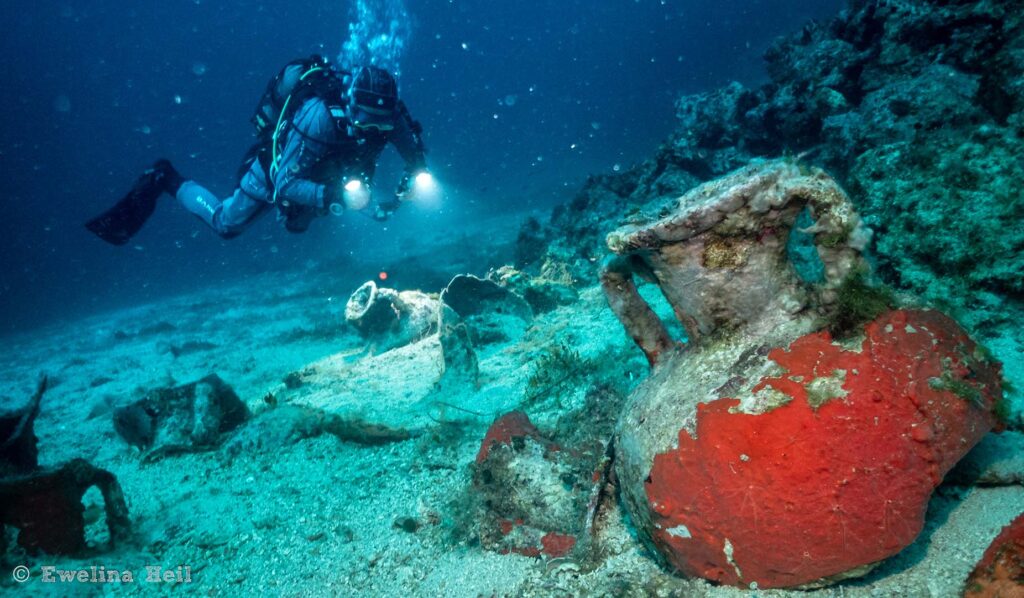
ROV – underwater photogrammetry
Alternatively, you can use a remotely operated vehicle (ROV) to take pictures without entering the water. Its advantage is that it can work underwater longer and deeper than a diver. However, like with any vehicle, first you have to learn how to steer it well, so that you don’t damage it and so that you don’t entangle the cable with something. Otherwise you will have to dive for it, if the depth allows it.
In addition, many of such vehicles currently available on the market have quite low-quality cameras, which means that photos or videos taken with them may not be suitable for photogrammetry. Therefore, if you are planning to buy an ROV for underwater photogrammetry, check whether the camera parameters at least match those of GoPro and whether additional lighting can be attached to it. Additionally, check how it behaves in the marine environment, especially in waves and light currents, so that you can buy a vehicle that will actually perform well. Every commercially sold ROV has some sort of video review, so you’re in for a field day on YouTube.
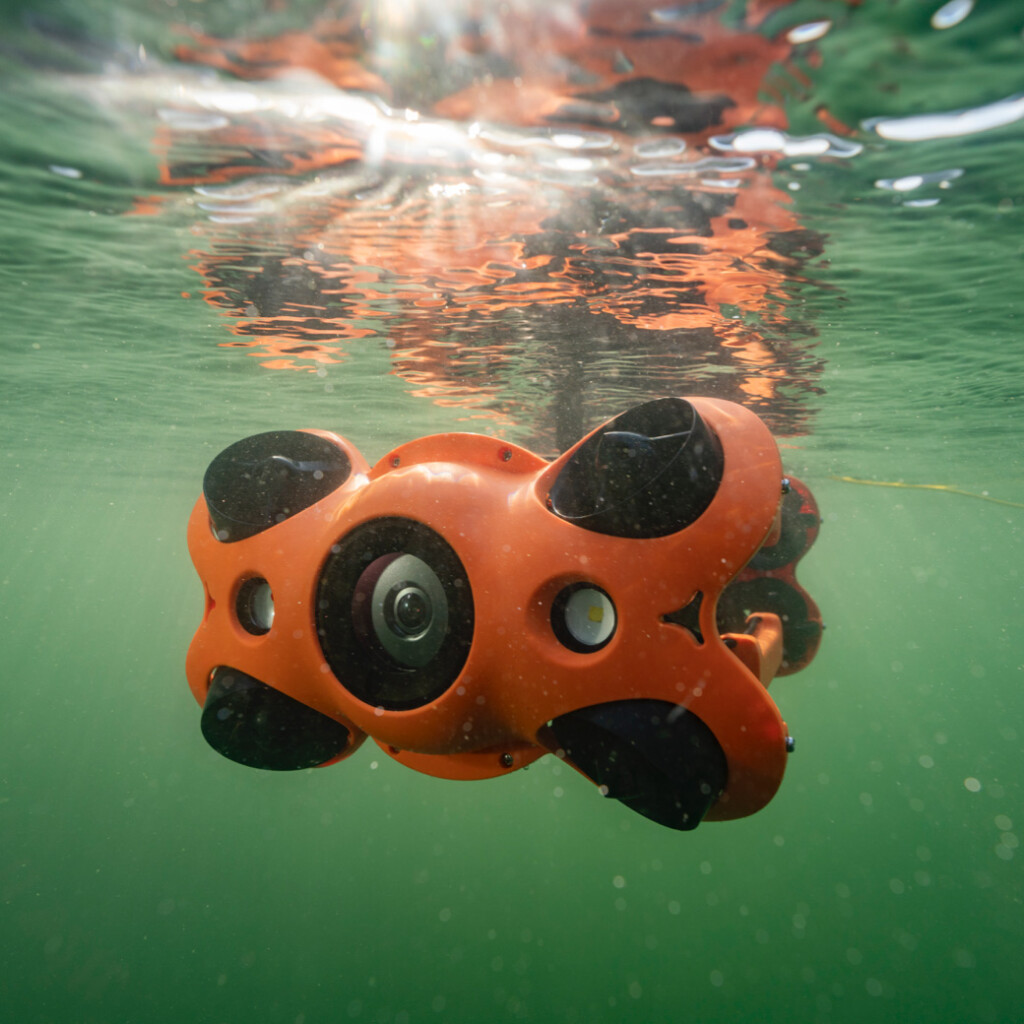
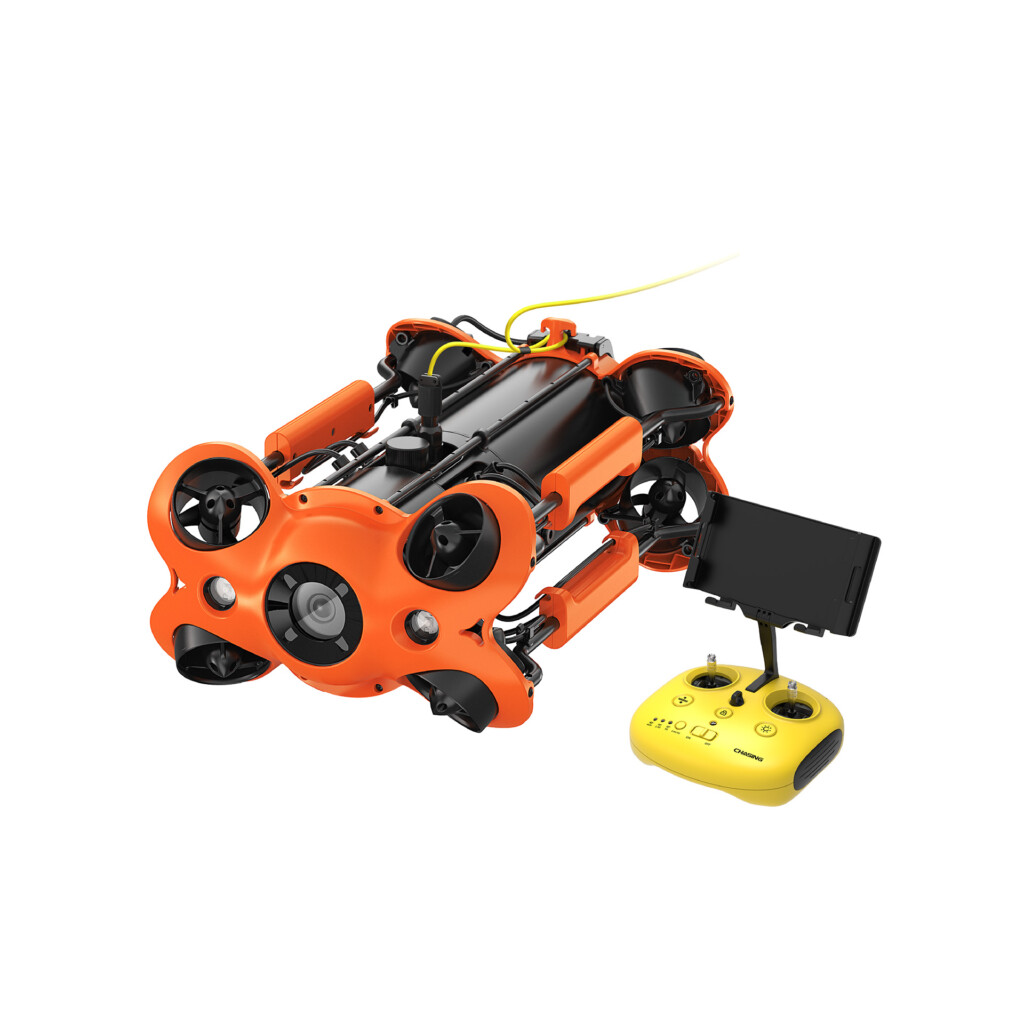
Get a reasonably good computer for photogrammetry
The computer needed for processing photogrammetry should have a good processor (CPU), a lot of RAM, and a dedicated graphics processor (GPU). If your computer has an Intel i5 processor, preferably an i7 (or equivalent AMD processors), at least 8 GB and preferably 16 GB of RAM, and an Nvidia Geforce GTX 2060 or newer graphics card (RTX series), this will be more than enough for simple and more advanced photogrammetry projects. Gaming laptops that are a few years old are great for processing photogrammetry. I use one myself. If your computer does not meet these parameters, you can still try. I have processed underwater photogrammetry on weaker computers many times. Be prepared, however, that everything will take a long time, so it is even more important to start with small projects and experiments.
Install underwater photogrammetry processing software
Agisoft Metashape

One of the most popular programs for underwater photogrammetry processing is Agisoft Metashape Standard. It has been used all over the world for years and is still being developed. One of its biggest advantages is the license. You pay for it once and use it for years using free updates and it has been like this for years. I have been using it on this principle for nearly a decade. And with each update the program has new functions and processes better and faster. You can easily download Agisoft Metashape trial version and use it for free for 30 days. Then you can buy its standard edition with a normal license or a cheaper one – educational, which has full functionality but cannot be used for commercial projects.
RealityCapture

The second program that works well for underwater photogrammetry is RealityCapture, which has similar capabilities to Agisoft Metashape. However, even for me, after years spent on photogrammetry processing and with a good understanding of the process, RealityCapture is still quite unintuitive, which is why it turns me off. Its biggest advantage right now is that it is free to use, unless you make a million dollars from it in a year. Sounds great, right?
Exactly… it sounds very marketing-oriented. The current license is yet another idea to attract more users to this program. It started with users paying about $100 every 3 months for the program, which encouraged even enthusiasts to create projects in it. When thousands of people from all over the world were already using it and had ready projects in it, that could not be transferred to any other software, the manufacturer suddenly changed the license, announcing the end of the a special offer and put users in a bad situation. They had to pay more to still be able to work on old projects. Later, there was a license which allowed you to process the project for free, but you paid when you exported it at the end, and the price paid depended on the processing time. So the longer someone worked on the model, the more they had to pay for it in the end. That is why now the new idea, this time with a free license, I myself perceive as something once again temporary and uncertain, but above all as a repetition of the original idea with a time-limited “special offer”. That is why I do not use it.
Process model from photos
This is the part of underwater photogrammetry that will take up the most time, especially at the beginning. In this article, I can only suggest where to look for tips on how to use the software, but know that you currently have more options than I did when I started. Be prepared for a series of experiments, small successes and small failures. But above all, arm yourself with courage!
Read the instructions
First, you can use the instructions provided by the software manufacturers. Both Agisoft Metashape and Reality Capture have their own manuals and examples. This can be a good start, although not everyone likes reading and following instructions. Besides, the manuals are usually created for terrestrial photogrammetry and not everything described there can be directly applied in underwater photogrammetry. However, it is worth starting with the manual.
YouTube Tutorials
You can also refer to YouTube tutorials. When I started, there was no such possibility, but now there is. You can definitely learn something from them, but I warn you right away that a lot of these videos present outdated knowledge. It also happens that some of the people offering such tutorials do not know much about underwater photogrammetry themselves, or photogrammetry in general, and they simply care about own popularity. So the knowledge is there, you just have to be able to filter it and learn only the right one.
Social media
You can also look for information in social media groups. There are many such groups, including several specifically about underwater photogrammetry. However, as is the case with groups, the people who are eager to provide answers are not always the ones who should be providing them and who are worth listening to. On the other hand, it will be difficult to get detailed instructions from experts, because they have been training for years and it is understandable that they do not really want to give away their knowledge for free. They will give you one or two tips, but you cannot expect someone there to teach you underwater photogrammetry from zero to hero.
Underwater Photogrammetry Courses – On-line
You can also take part in one of my underwater fortogrammetry courses, which I have been successfully offering online for years. I will teach you everything you need to know for your first photogrammetry projects. The course takes about 12 hours of live tuition with me, plus about 30-50 hours of your own work.
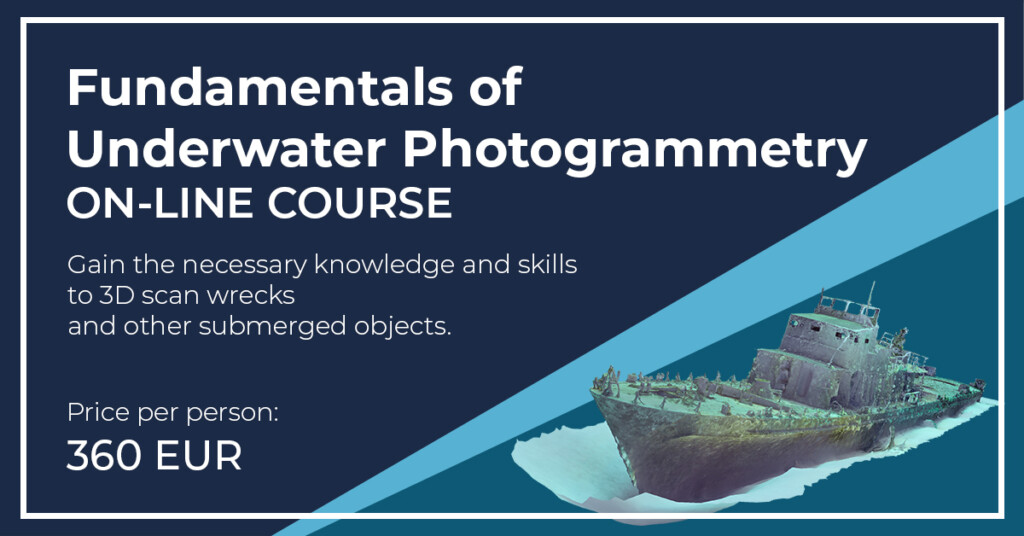
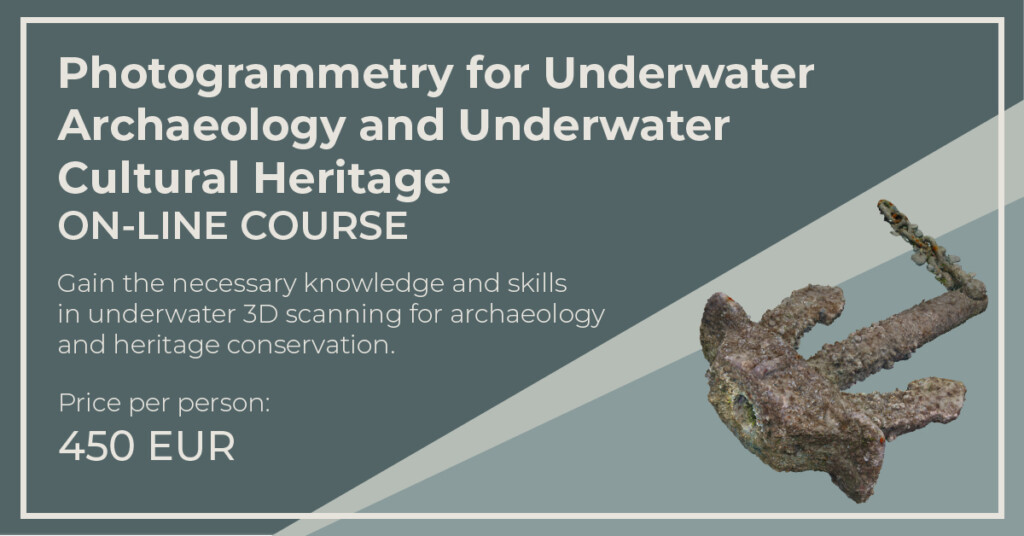
Below you can see a gallery with 3d models made by my former students who are now involved in underwater photogrammetry professionally or as a hobby.
Underwater models by my students by Mariusz Milka on Sketchfab
Summary
Underwater photogrammetry is an interesting and constantly developing field. It offers huge possibilities in imaging, documenting and researching the underwater world. And it is usually developed by enthusiasts, mainly divers. Perhaps you are one of those people who will develop it even more? Probably everyone who currently deals with underwater photogrammetry professionally or as part of projects, was interested in it first as a hobby. So if you are interested in underwater or terrestrial photogrammetry, then just try it and experience it. And if you like this article, share it with others and read my other articles on this page.
Mariusz Milka
Digital Heritage and Underwater Photogrammetry Specialist

